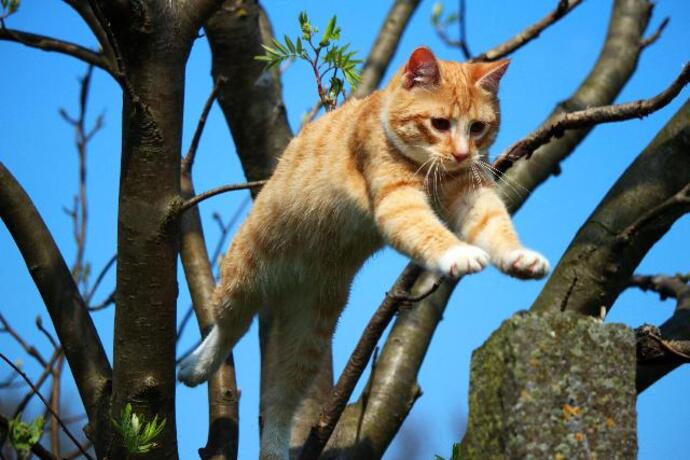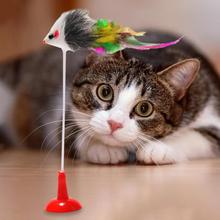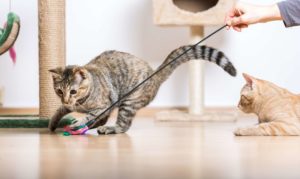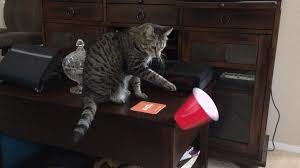Why DO Kitties Stalk and Pounce?

Have you ever paw-ndered the reasons behind your favorite feline’s penchant for stalking and pouncing?
Being an integral part of every cat’s nature, all of them stalk and pounce – kittens, young cats, adult cats and senior cats. By encouraging this behavior in your own kitty through interactive indoor play, you’ll not only be adding many moments of merriment to your daily playtime routine, you’ll be actively enriching her environment.
Unlike domesticated cats who depend on their owners for food, their ancestors were wild, living in the wild, and survived solely by using their innate stalking skills, making them superbly successful hunters. Born with those same keen senses, athletic flexibility and silence and stealth in their movements, today’s kittens ideally learn the nuances of stalking and pouncing from their mothers.
If you’ve ever observed a litter of kittens, their vigorous playtime activities will always include wrestling, stalking and pouncing which provide them with much-needed exercise. As for adults in a multi-cat household, added to the wrestling, stalking and pouncing, are chasing and ambushing – all in the name of feline fun and frolics.
The key to successful and paws-itive play is, first and foremost, reciprocity. Example: If a kitten or young cat in a multi-cat home is persistently stalking and pouncing on an older one who seems anything but pleased, it’s time for you to intervene and redirect the stalking cat’s attention towards alternate forms of amusement. Increase both your affection and the amount of time that you interact with her. Engage her in longer one-on-one play sessions that elicit and satisfy the stalking and pouncing side of her nature by using a feather toy, a mouse toy on a wand or a laser pointer.
If you have only one cat, encourage her stalking and pouncing behavior by throwing one of her favorite toys away from her but not out of her sight, thereby making the toy appear to move and act like prey. Keep your movements small as opposed to wide and sweeping to pique her interest particularly at the start. In addition to toy tossing, create an environment that’s conducive to hunting by putting out some boxes for her to hide behind and/or a cat tunnel for her to run through.
Not only are these regular play sessions the purr-fect opportunity to strengthen the bond between you, it provides your cat with the stimulation and exercise that her body and mind crave. If her urge to stalk and pounce isn’t satisfied, she can, all too easily, become bored, frustrated, depressed and/or lethargic. Worse still, a bored, frustrated cat may even use her claws on you – from your arms to your feet – in an effort to fulfill her innate desire to hunt prey.
Finally, if you have a kitten, you may find your steps “dogged” by a playful stalking and pouncing little puss who’s simply following her instinct and doesn’t yet know any better. To mold your enthusiastic but errant kitten into a well-behaved adult, ensure that you patiently provide her with the correct behavioral guidance, one gentle – and amply rewarded — paw step at a time.



